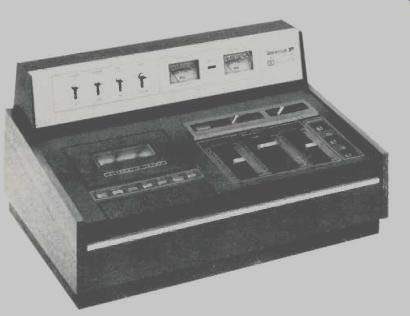
MANUFACTURER'S SPECIFICATIONS
Frequency Response: 35 to 15,000 Hz ± 2 dB with Low Noise or CrO2 tape; 35 to 14,000 Hz with regular tape. Signal to-Noise Ratio: Better than 48 dB without Dolby. Bias Frequency: 110 kHz. Input Sensitivity: Mic, 0.25 mV; Line, 100 mV. Output: 1 volt.
Dimensions: 16 in. W x 11 in. D x 8 in. H.
Weight: 14 1/2 lbs.
Price: $279.95.
The Wollensak 4780 is an unusual-looking machine-at least in comparison with the general run of cassette recorders. In fact, it looks more like a studio recorder with its sloping back panel and controls! Reading from left to right, there are four lever switches for the following functions: power on/off, recording stereo/mono, line or mic input, and tape selection for CrO2 or regular. Then come the two VU meters with the record indicator light in between. On the main panel (which also slopes to the front), is the cassette well and in front of that is a row of seven piano keys for EJECT, REWIND, RECORD, PLAY, FAST FORWARD, STOP, and PAUSE. To the right are three slide controls for level-left channel, right ditto, and master, which controls both channels. Behind these is the digital counter and memory and Dolby switches--both with indicator lights. At the extreme right are the microphone and headphone sockets. Input and output sockets, together with Dolby calibration controls are in a recess at the rear. A pre-set output level control is also located on the rear panel-a useful feature.
An end-of-tape switch disengages the pressure roller and heads from the cassette, reverting automatically to the STOP mode. This is a fairly common feature with good quality cassette machines but 3M engineers have gone a stage further with the 4780 and fitted what they call a "Cassette Guardian." This is a device that automatically puts the machine in the STOP mode if a defective cassette stalls or jams the tape transport mechanism. Not so common these days, but it's a worthwhile refinement for all that.
Measurements
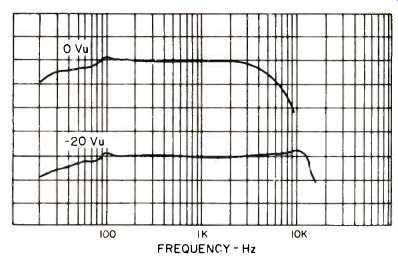
Fig. 1-Record-replay response with Maxell UD tape.
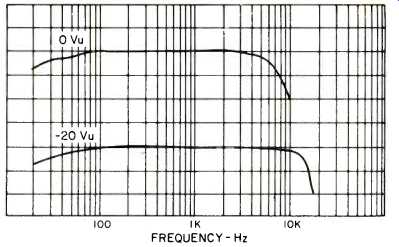
Fig. 2-Record-replay response with CrO2 tape.
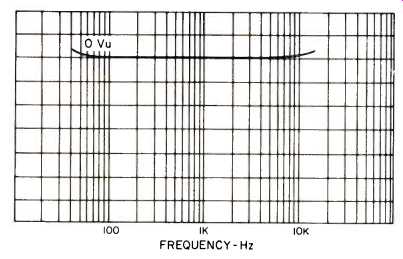
Fig. 3-Playback response from standard tape.
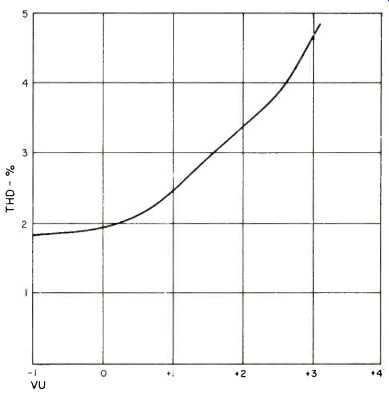
Fig. 4-Distortion at 1 kHz.
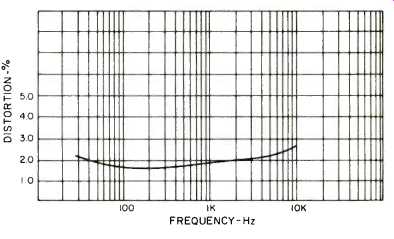
Fig. 5-Distortion vs. frequency (0 VU).
Figure 1 shows the record-replay response with Maxell UD tape. The 3 dB point is 14,500 Hz. The next graph, Fig. 2, shows the response with CrO2 tape (TDK KRO) and the 3 dB point is somewhat higher at 15,000 Hz with rather more "headroom." Figure 3 shows the response from a standard test tape and Fig. 4 gives the distortion at 1 kHz. It will be seen that the THD is less than 2% at 0 VU, increasing to 4.5% at +3 VU. Distortion versus frequency can be seen from Fig. 5.
Signal to noise came out at-51 dB (ref. 3% or + 1 VU) and 57 dB with Dolby, which is excellent. Input sensitivity was 120 mV for 0 VU and 27 mV for microphone. Output was just under I volt-985 mV, to be precise. Erase ratio was better than 59 dB and wow and flutter was 0.17% record-replay. Rewind time was 76 seconds for a C60 cassette and speed checked out 0.1% fast.
Listening Tests
I found the 4780 a very easy machine to use--partly because of the arrangement of the control switches and the rear panel.
The VU meters are smaller than some, but they are illuminated and because of their position, they can be seen from quite a distance. The provision of three input controls is a little unusual, but it does permit channel balancing as well as dual control with the master slider. And, of course, you can fade a signal from one channel to the other if you desire. The eject key merely opens the compartment lid--the cassette isn't sent to the other side of the room--it just lies there waiting to be picked up.
Several tapes were made both with and without the Dolby switched in, mostly from CBS SQ matrix records and FM transmissions using a Dyna AFM-6 tuner. Phono cartridge was a Shure Mk III with a Thorens 125 turntable. No trouble at all. I did manage to find a bad cassette (made by a deservedly obscure company in L.A.) and I can report that the Guardian did what it is supposed to. A few words about the styling: It is a popular belief that a truly functional design will also look attractive. This is not true, but it is possible to combine the two parameters and the 4780 does look very elegant with its matte black and silver panel-and it is completely functional. All-in-all, the Wollensak 4780 is certainly one of the best medium-priced Dolby cassette recorders now available.
-George W. Tillett
=================
(Adapted from Audio magazine, Aug. 1974)
Also see:
Wollensak Model 6364 Two/Four Channel Tape Recorder (Equip. Profile, Feb. 1972)
= = = =